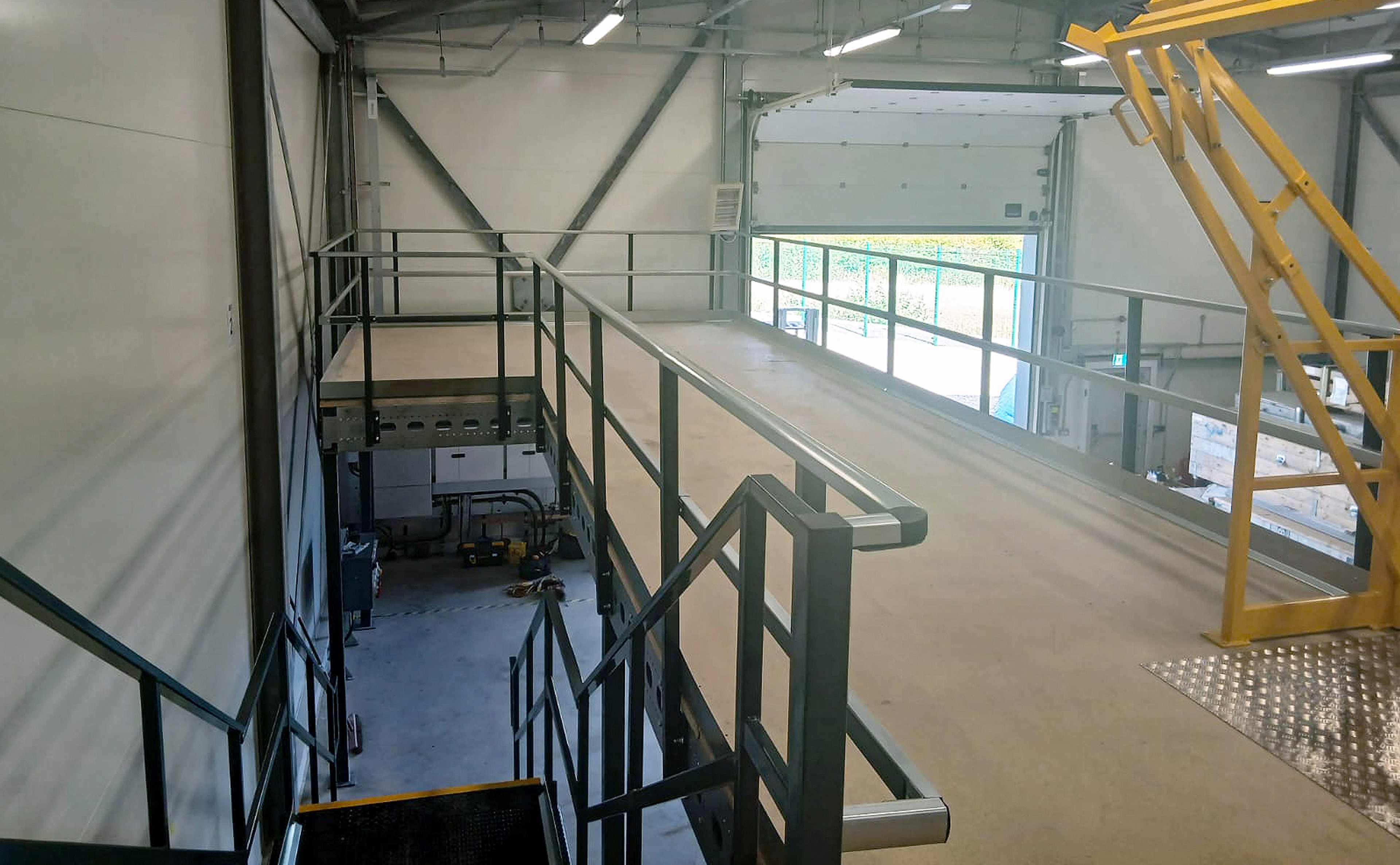
Can a Mezzanine Floor Support Heavy Machinery or Pallet Racking?
To put it simply, a mezzanine floor can support heavy machinery or pallet racking, but only if it’s been designed for that specific load. The structure’s strength depends on factors like column spacing, decking material, and load capacity.
Standard mezzanines are usually built for lighter storage or office space, while heavy-duty designs can handle forklifts, racking, and industrial equipment. Always have a structural engineer confirm the loading limits before installation.
How Much Weight Can a Mezzanine Floor Hold?
There isn’t a one-size-fits-all answer. Light-duty mezzanine floors are typically designed to hold around 250 kilograms per square metre, suitable for office spaces or small parts storage. Heavy-duty mezzanines can handle 500 kilograms per square metre or more, making them ideal for palletised goods or machinery.
Engineers consider both static loads, such as stored goods and racking, and live loads from staff or moving equipment to make sure the structure remains stable. Before installation, having a professional assess your intended loads is essential.
Knowing the load capacity leads naturally to another important question: how is the mezzanine actually supported? This is where the difference between a regular mezzanine and a rack supported mezzanine becomes important.
Rack Supported Mezzanine Floors vs Regular Mezzanines
A standard mezzanine has its own steel frame, independent of any shelving or racking below. It’s built as a separate structure, usually to create extra workspace, storage, or offices above ground level.
A rack supported mezzanine floor is different. It uses the pallet racking itself as the support for the floor above, combining storage and structural support into a single system.
This design can save space, reduce material costs, and speed up installation. It’s ideal for warehouses that already use pallet racking and want to expand vertically without building a separate structure. It also works well when goods are stored below and picked or packed from the upper level.
Understanding this difference is key because the type of floor you choose determines what loads it can safely carry, whether that’s machinery or pallet racking.
Supporting Heavy Machinery on a Mezzanine
A mezzanine can support heavy machinery, but not every floor is automatically suitable. Equipment such as conveyors, packaging lines, or automated systems creates extra forces, both static and dynamic, that must be accounted for in the design.
To handle this, mezzanines may require deeper beams, stronger decking, or closer column spacing. Working with an experienced engineer ensures your floor is safe and capable of supporting the equipment you plan to install.
Installing Pallet Racking on a Mezzanine Floor
You can install pallet racking on a mezzanine, but you need to be careful. Standard mezzanines may not be designed to handle the concentrated loads created by racking uprights. Installing racking without confirming the structural capacity could lead to overloading and safety issues.
Rack supported floors are ideal for this scenario because the racking itself helps support the floor. This integrated system allows you to maximise vertical storage while keeping the layout safe and compliant with UK regulations. For more details on racking types and setups, see our Complete Guide to Pallet Racking.
Safety, Deflection, and Regulations
Deflection is the amount a floor bends under weight. Mezzanines are designed with strict deflection limits to ensure they feel solid underfoot and don’t compromise safety below. In the UK, the typical limit is 1/200 of the span, meaning a 6-metre beam can flex up to around 30 millimetres safely.
All mezzanine floors must comply with building regulations and BS EN 1991 standards for both distributed and concentrated loads. For a more detailed explanation of these rules, check our post on Building Regulations for Mezzanine Floors.
FAQs
Access: Stairs or Ladders?
You’ll need one or the other to provide safe access. Most mezzanines used regularly for storage or work areas will include a staircase with handrails and kick plates. If the mezzanine is only used occasionally for maintenance or inspection, a fixed ladder might be enough. The choice depends on how often the space will be accessed and how the mezzanine is used.
Maximising Space: Do I Need The Rule of Three?
The “rule of three” is a simple way to think about space efficiency. Each additional tier in a warehouse can roughly triple usable space compared to standard ground-level storage. Rack supported floors are particularly effective because they combine vertical storage with usable floor space above, giving you more capacity without expanding your building.
Designing a Mezzanine That Meets Your Load Requirements
A mezzanine floor can safely support heavy machinery, pallet racking, or dense stock when designed correctly. The key is ensuring your layout, load data, and materials all match your intended use.
We design and install custom mezzanines and rack supported floors to maximise space while meeting UK safety standards. Whether you need a simple storage platform or a fully integrated rack supported system, we can help you find the right solution for your warehouse.
Arrange a consultation
Contact us today to arrange a free, no obligation consultation.
Book a consultation
